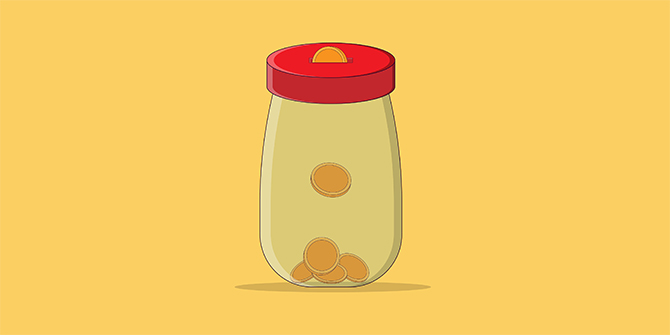One thing even politicians can agree on is that we will all, eventually, die. But what we die of, and at what age, is changing. Non-communicable diseases are increasingly accounting for excessive morbidity and mortality burdens. Here, Katherine Smith and colleagues outline different approaches to public health, contrasting those who blame individuals and those who blame corporations for this transition. Comparing tobacco, alcohol and processed food industries helps outline an important research agenda.
The growing prevalence of non-communicable diseases (NCDs) is triggering substantial policy concern, evident, for example, in the 2011 UN high level meeting on NCDs. Yet, it’s clear that there are very different ways of thinking about this ‘epidemiological transition’. For some, including the current UK government it seems, the rise in such diseases is viewed primarily as a consequence of the choices that individuals make. In contrast, many of those working in public health understand the problem to be largely a consequence of the strategies that corporations pursue. These different views lead to different conclusions about appropriate and effective responses.
For those who take the view that the growing NCD burden is a consequence of economic development (via, for example, more sedentary and unhealthy lifestyles), then it’s logical to focus policy responses on trying to inform the choices that individuals make. From this perspective, we can all ‘choose to be healthier’ by doing more exercise, eating healthier foods and avoiding, or limiting, our consumption of health-damaging products such as tobacco and alcohol. The CEO of Pepsi Co, Indra Nooyi, endorses this viewpoint, arguing that PepsiCo is an ‘ethical’ company because it provides consumers with a choice of products, ranging from healthy to less healthy.
This emphasis is frequently reinforced in the media through advertising, news stories and television programmes that promote the idea that individuals choose unhealthy lifestyles, and via a focus on individual-level solutions to improve health. From this viewpoint, corporate interests involved in the production and marketing of health damaging products should be ‘part of the debate’, or even ‘part of the solution’ to the emerging health crisis (e.g. via reformulated products, changing labelling and implementing self-regulatory codes).
Yet, if we turn to tobacco, a sector which has been extensively researched for several decades now, a very different approach is evident. Here, the prevailing view in public health and increasingly in policy, is that the tobacco industry is a primary ‘vector’ of the growing NCD burden. Investigative journalism and research centring on internal tobacco industry documents has made public the extent to which senior managers of tobacco companies have (amongst other things): lied about the addictiveness of nicotine, worked to make their products more addictive; targeted young children as ‘new markets’; and worked to limit tobacco control policies.
Consequently, the political and public legitimacy of tobacco industry actors has plummeted, triggering some desperate efforts to regain a seat at the policy table. Analysis of a European Union consultation on smokefree legislation has demonstrated that we are now at a stage (at least in the EU) where tobacco industry actors are almost entirely separated from public health policy debates – although the rise of e-cigarettes is beginning to challenge the cohesiveness of the tobacco control movement. In part, this reflects public health efforts to ‘denormalise’ tobacco and routine business practices of the tobacco industry; efforts which have gained particular traction in the UK. The clear differences in perception of the tobacco industry, on the one hand, and the food and alcohol industries on the other, warrant deeper consideration: why are these three industries perceived so differently and is this distinction justified?
How different are the tobacco, alcohol and processed food industries?
There are two obvious ways in which it might seem appropriate to distinguish between tobacco, alcohol and food industries. First, we might consider that the harms associated with tobacco products are greater than those associated with alcohol and food. Yet, assessments of the contribution of alcohol and obesity to adverse health outcomes (e.g. adverse pregnancy outcomes) suggests they are often as high as tobacco. Likewise, comparative estimates of the costs of alcohol, tobacco and ultra-processed food often suggest the costs are similar and, in fact, probably higher for food-related problems, such as obesity. So this first rationale seems unconvincing.
A second reason concerns the behaviour of the industries. It is certainly the case that more is known about the efforts of tobacco companies to misrepresent research and to shape policy in their interest than is known about the efforts of alcohol and food companies. But this is beginning to change. For example, in his book Lethal but Legal Nicholas Freudenberg shows that the practices of these industries in marketing, product design, lobbying, and sowing doubts about evidence of harm are remarkably similar.
How different are the processed food and tobacco industries? (Credit: Alan Chan CC BY-SA 2.0)
These similarities are also evident in research examining alcohol industry efforts to influence policy in the context of minimum unit pricing debates in the UK. Like the tobacco industry, the alcohol industry pursues highly integrated strategies and employs many of the policy-influencing tactics identified within the tobacco industry, including extensive lobbying at all stages of the policy process, the use of thinks tanks and front groups, attempts to shape the scientific content of policy debates, and to influence public perception of their industry and policy proposals. Again, such tactics are evident in work which has compared, for example, how tobacco and soda companies have used corporate social responsibility campaigns to influence the political landscape. In fact, the soda industry goes even further than tobacco in its explicit goals to increase consumption and target children. This suggests that commercial strategies to influence public and policy debates are very similar across industry sector. Hence, the second rationale (different industry behaviour) doesn’t seem valid either.
Yet, in interviews I have undertaken over the past four years, the view that tobacco represents a radically different case from alcohol and food seems deeply engrained in the way many policy makers, researchers and advocates think. It seems likely that this is at least partly a result of importance attached to individual-level behaviour in neoliberal economies but it may also reflect the success of ‘tobacco exceptionalism’, a core tenant of which is the idea that other industries are different from tobacco and not necessarily worthy of the same, strict rules to protect public health policies from industry interference. This has worked well for tobacco control advocates in the UK so far but may have unintended consequences for other dimensions of public health.
A new interlinked public health agenda: assessing the role of industry
If we are serious about tackling the rising burden of NCDs then we need to revisit the popular and persistent distinction between tobacco, alcohol and food industries. From a research perspective, the following five questions seem like a good place to begin better understanding, and perhaps challenging, widely held distinctions between the various industries involved in producing and marketing unhealthy commodities:
- What are the interactions between the actors that constitute each of these industries and how close are these connections?
- How similar are food and alcohol industry approaches to influencing public, political and policy debates to tobacco? (Since these industries have not had to provide access to their internal documents on the same scale as tobacco, we need to develop innovative methodologies and find new data sources.)
- How do members of the public and key policy actors view each industry and their products and why? Does this appear to vary by context or change when presented with different kinds of evidence?
- What are the potential policy alternatives that might contribute to achieving healthier future scenarios and how do these differ across alcohol, tobacco and food?
- Reflecting this, to what extent can the case study of tobacco control be used to provide lessons for developing and implementing evidence-based policies to promote and protect people’s health beyond tobacco?
These suggestions are, of course, simply a means of contributing to this emerging debate. What seems essential is that we begin to develop a new research agenda in public health, and policy and politics more broadly, which frees us from our current silo-based view of these interlinked public health problems.
___
 Katherine Smith is Reader at the Global Public Health Unit at the University of Edinburgh. He recent publications include the book Beyond Evidence Policy in Public Health: The Interplay of Ideas (available here) and, with colleagues, an edited collection Health Inequalities: Critical Perspectives (available here). The following colleagues contributed to the above blog piece: Professor Oliver Razum, Dean of the School of Public Health at Bielefeld University, Germany; Professor Nicholas Freudenberg, City University New York; Dr Lori Dorfman, University of California, Berkeley, Dr Benjamin Hawkins, London School of Hygiene and Tropical Medicine, Dr Shona Hilton and Dr Heide Weishaar, MRC/CSO Social and Public Health Sciences Unit, University of Glasgow. An earlier, slightly different version of this blog piece was published by Policy & Politics in November 2015.
Katherine Smith is Reader at the Global Public Health Unit at the University of Edinburgh. He recent publications include the book Beyond Evidence Policy in Public Health: The Interplay of Ideas (available here) and, with colleagues, an edited collection Health Inequalities: Critical Perspectives (available here). The following colleagues contributed to the above blog piece: Professor Oliver Razum, Dean of the School of Public Health at Bielefeld University, Germany; Professor Nicholas Freudenberg, City University New York; Dr Lori Dorfman, University of California, Berkeley, Dr Benjamin Hawkins, London School of Hygiene and Tropical Medicine, Dr Shona Hilton and Dr Heide Weishaar, MRC/CSO Social and Public Health Sciences Unit, University of Glasgow. An earlier, slightly different version of this blog piece was published by Policy & Politics in November 2015.
(Featured image credit: James Vaughan CC BY-NC-SA. 2.0)









1 Comments